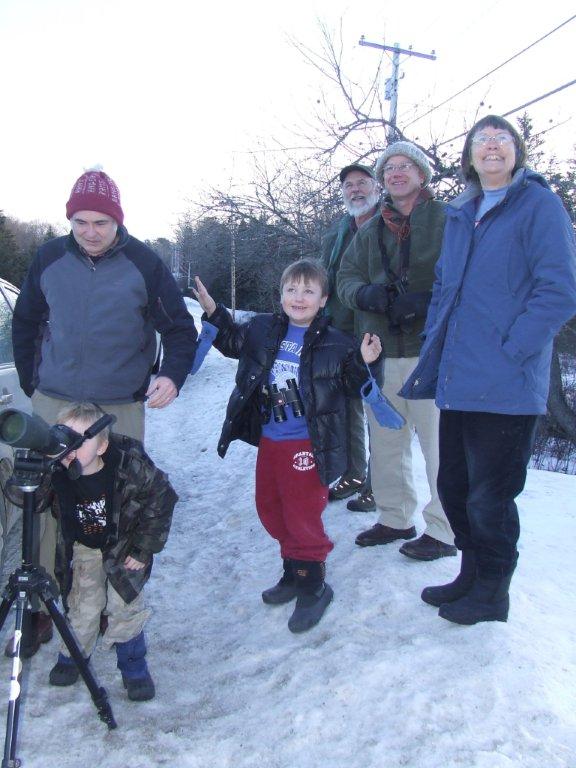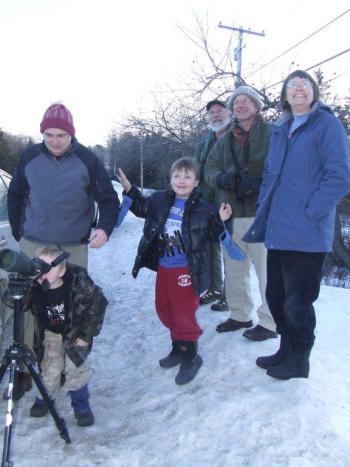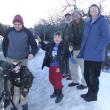Christmas Bird Counts
We received an email last week from a young local birder who asked about the idea of doing a Christmas Bird Count in the Boothbay area.
It occurred to us that many area residents might not know about these counts, which, for birders, are a wonderful and important holiday tradition.
This tradition began in 1900, an answer to the “Side Hunt,” in which hunters would go into the fields with their guns and whoever returned with the biggest pile of birds (and other animals) was declared the winner.
This senseless slaughter was repulsive to many, including to conservationist Frank Chapman, of the newly started Audubon Society.
On Christmas Day in 1900, 27 Christmas Bird Counts were held in places like Toronto and Pacific Grove, Calif., with the vast majority of them taking place in the northeastern U.S.
These days, there are tens of thousands of official Christmas Bird Counts that take place around the world, with most still held in the United States. Coordinated by the National Audubon Society, each Christmas Bird Count (CBC) occurs within a predesignated 15-mile-radius circle on a date decided on by the local coordinators within a 3-week window from mid-December to the first week of January.
Coordinators assign teams of birders to count the numbers of each species they can find within smaller sections of the count circle, thereby attempting to get a representative sample of the birds in the area in the early winter time period.
Some counts have been carried out annually for many decades, a few even for more than a hundred years.
You can imagine how having data from tens of thousands of such counts over many decades would be of immense use in tracking changes in the numbers and distribution of our continent’s bird life.
Nearly three dozen Christmas Bird Counts take place here in Maine, some of them having been carried out for more than 50 years.
A sliver of East Boothbay and Edgecomb are within the area covered by the Pemaquid-Damariscotta CBC; counts also take place nearby in Alna and Bath, and offshore on the islands of Monhegan and Matinicus.
CBCs are the oldest example of what scientists now refer to as “citizen science,” projects that engage everyday citizens in collecting information that is assembled into databases, which can be used by scientists for research.
Citizen science projects like the Audubon Christmas Bird Count involve so many people collecting information from so many locations that they would be effectively impossible to carry out any other way; hiring and managing tens of thousands of professional biologists and moving them around the country would be vastly expensive.
Other well-known citizen science projects include the Cornell Lab of Ornithology’s Project Feederwatch, the Great Backyard Bird Count (in February), and here in Maine, Maine Audubon’s Loon Count.
There’s also the aptly named eBird, a citizen science project that encourages anyone to input any of their bird sightings into a global database of bird sightings.
Today, the “Side Hunt” slaughter is a thing of the past. Instead, bird enthusiasts crunch through snowy streets, parks, and forests, taking aim with binoculars rather than guns.
Rather than bring home bags of feathered bounty, they return with data that can help researchers better understand and protect birds. If you’d like to get involved in the action, visit www.audubon.org to find out the results of counts that have already taken place and to find out how to participate in any that are still to be held.
Merry Christmas Bird Counts to all, and to all, good birding!
Dr. Jeff Wells is the senior scientist for the Boreal Songbird Initiative. During his time at the famed Cornell Lab of Ornithology and as the Audubon Society's national bird conservation director, Dr. Wells earned a reputation as one of the nation's leading bird experts and conservation biologists. Jeff's grandfather, the late John Chase, was a columnist for the Boothbay Register for many years. Allison Childs Wells, also formerly of the Cornell Lab of Ornithology, is a widely published natural history writer and a senior director at the Natural Resources Council of Maine. Together, they have been writing and teaching people about birds for decades. The Maine natives are authors of the highly acclaimed book, “Maine's Favorite Birds.”
Event Date
Address
United States





































